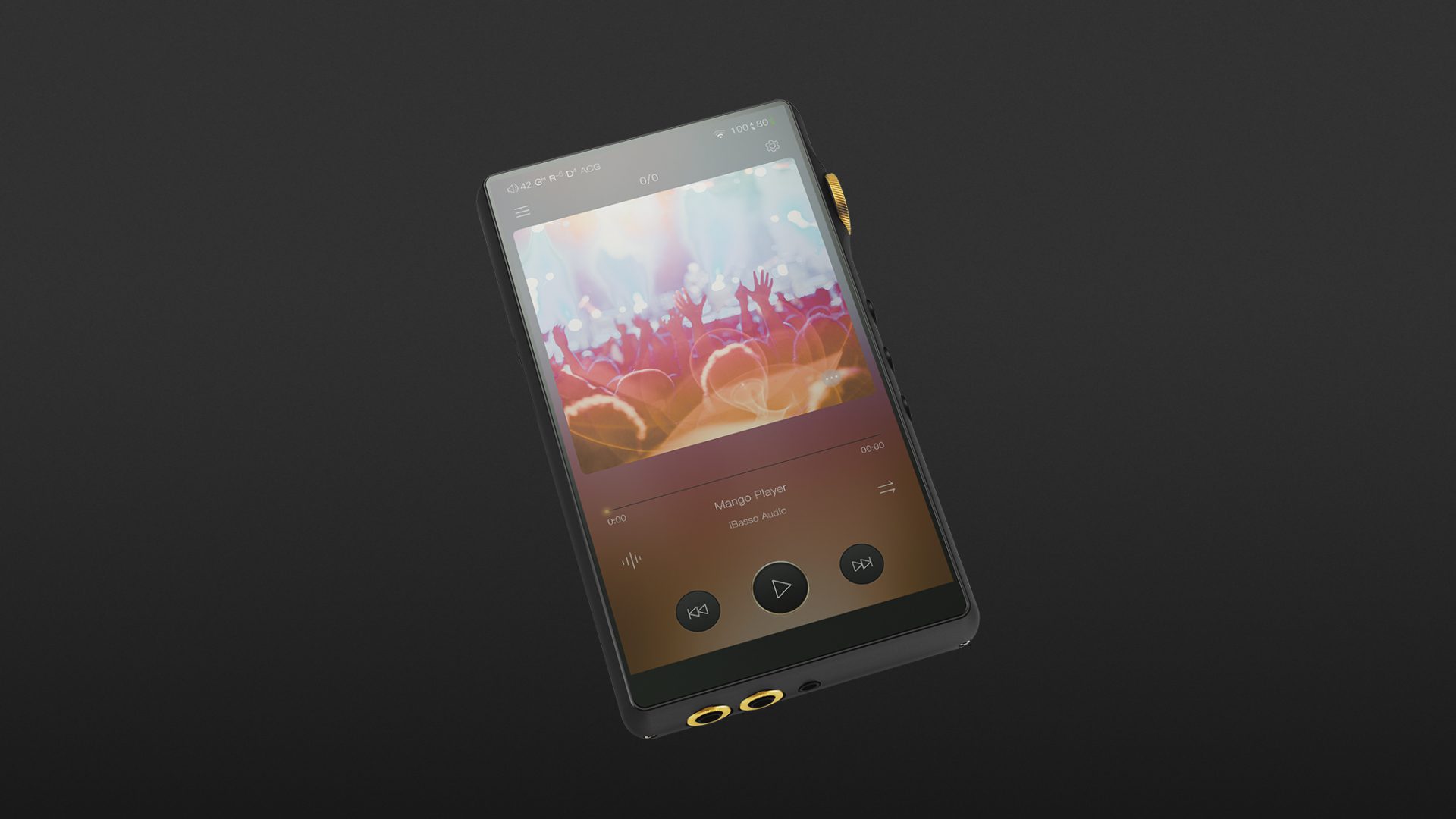With the DX 240, iBasso offers an anniversary special edition that is worthy of the term in every respect. Whether it’s the exchangeable amplifier modules for adaptation to different headphones, the excellent workmanship with successful design and haptics, the outstanding DAC for high-resolution formats and exceptionally vivid sound reproduction, the DX 240 offers top performance in all areas. The versatile connections allow it to be used at home, be integrated or used as a main unit. It also offers all the advantages of portable use. An audiophile high-end device that, with a price of 999 Euros, can almost be considered a bargain for the performance it offers. Hats off!
iBasso offers a really special edition with the DX 240. Exceptional sound reproduction is paired with interchangeable amplifier modules and ample connectivity. This player offers pure luxury both at home and on the move and thus receives our unconditional recommendation.
Just in time for the company’s 15th anniversary, the Chinese manufacturer iBasso is releasing the special DX 240 model. Their previous top model DX 300 is the basis to which some gourmet ingredients have been added, in addition to an up-to-date chipset. We have taken a closer look at the new release.
Company background
iBasso was founded in 2006 in Shenzhen, China and from the start, they specialised in devices for mobile music enjoyment. The manufacturer’s portfolio began with mobile headphone amplifiers and has since expanded to include headphone amplifiers/DACs and headphones. The company became known to a wider audience with the first Android-based music player, the DX 100. This device was equipped with the powerful ESS Sabre-DAC 9018 and offered an ample array of connections for different types of headphones at the time. The coaxial and optical digital outputs and WiFi functionality were also unusual at the time. Returning to the present, the current product range impressed with high-resolution audio formats and touchscreens, various in-ear systems and interchangeable headphone cables.
In practice
The DX 240 raises high expectations. This is clear from the size and design of the packaging, which has been given special attention to creating a somewhat glamorous yet classic appearance. The golden outer design of the packaging serves as a cover for the case held inside – a little like the sophisticated cover of a special edition of a multi-part book series. Included are the DX 240, four touch display protection sheets, a coaxial cable, a balanced burn-in cable, which according to the manufacturer, is supposed to reduce the waiting time for optimal sound performance, and the obligatory clear silicone protective cover. The optional expansion pack offers different connector covers for the interchangeable amplifier modules. The package also includes another leather protective cover.
The manufacturer has obviously thought about the feel. The high-quality aluminium housing with its full-surface rear curvature feels great to hold in the hand. All edges are slightly deburred to further refine the feel. The front side features an almost full-screen IPS touch display with Full HD resolution and a 5″ diagonal. The dimensions are 126 x 70.5 x 18.7 mm with a weight of 240 grams.
The large golden rotary wheel is an eye-catching feature, which is used for volume control as well as for activating the device. Other dedicated buttons for start/pause and track jumps are located directly below it. On the opposite side, a microSD slot accepts SDHC or SDXC memory cards with a capacity of up to two terabytes.
The generously designed connection panel accommodates a line output (3.5 mm) as well as unbalanced (3.5 mm) and balanced headphone outputs (2.5 mm). This means that the unit is not limited to use with headphones but also allows connection to active speakers or integration into an existing hi-fi system. This means that you can actually use the same device on the move and at home.
The DX 240 offers a coaxial digital output if you want to use your own favourite converters. The USB-C port is used for charging, data exchange with a computer, and as a high-quality converter for Windows and Macintosh computers.
Technology
The iBasso DX 240 is equipped with the latest processor ARM Qualcomm 660 CPU with eight processing cores and 4 GB RAM. Bluetooth 5.0 is supposed to ensure a long-range reception. In addition, the chipset offers WLAN and the aforementioned USB audio interface. Another highlight is the exchangeable amplifier modules: The manufacturer makes it possible to select the appropriate amplifier module for the headphones used – ideal for customers of older iBasso devices. The integrated rechargeable battery has a capacity of 4,400 mA and enables runtime of ten to 12 hours. Charging to full capacity takes just under two and a half hours.
Modes of operation
Built-in to the device, the DX 240 operates with an adapted version of Android 9.0. Based on this, APK-Pure, instead of the Google Play Store, provides the option to install apps of all kinds. Accordingly, streaming services can also be used, and in our test, we tried current service providers such as Tidal, Apple Music and Spotify. The appropriate codecs such as aptX and LDAC support a high-sounding transmission. AirPlay and DLNA are also supported.
However, the device can not only receive but also transmit. This means that integration with a home stereo system, Bluetooth headphones and music playback in the car is also taken care of.
However, those who prefer pure sound without any interference will get their money’s worth with the alternative operating system Mango OS and the Mango player. Here, the focus is on the best possible output quality, which is fed from a NAS server or the internal memory card. In addition, the USB-C port enables direct connection to a computer in order to listen to existing sound libraries via the DX 240 as a high-quality converter.
D/A converter
A core component of portable audio players are the converters. With the DX 240, iBasso relies on a combination of FPGA and the latest high-quality converter chip. The FPGA can be understood as a processor that prepares incoming audio streams and then passes them on to the converter. Technically, this has several advantages, as the audio stream is synchronised and freed from error sources such as timing fluctuations (jitter) before it reaches the converter. The latter is the ESS Sabre ES9038PRO DAC, which uses the so-called Hyperstream II technology and provides eight channels in 32-bit resolution. It supports DSD 512, PCM up to 32 bit/768 kHz, MQA decoding in 16 x mode and a dynamic range of up to 132 dB. Equally impressive are the low distortions (THD+N) of just -122 dB. The technical values, including the high-resolution formats, are thus at an exceptionally high level, which goes beyond audiophile standards, and can otherwise only be found in mastering studios. This made me all the more curious about the sound quality.
Sound
The neutral Funk MTX Monitor preamplifier served as an output device, enabling us to make direct comparisons. For comparisons with another DAP, the Shanling M3X with comparable electronics was available (to the review). Other playback devices used were a Cambridge Audio CXN V2 streamer/network player, a CD player (NAD 512) and a smartphone (Samsung Galaxy S7). The headphone selection was covered by models from Stax, Focal and Sennheiser. Last but not least, a Lavry DA11 served as the evaluation transducer.
I started the test sequence with Android-based play mode. This was followed by a comparison with the audiophile Mango player. The initial musical impression was one of directness, a large virtual stage and plasticity of the sound. We played titles from different genres to evaluate the implementation of the musical parameters via the different playout paths. It was striking that the iBasso DX 240 presented the music with impressive directness, regardless of the genre. The music sounded immediate and allowed the individual instruments or voices to be grasped emotionally and immediately. In the case of “Celestial Echo” by Boris Blank and Malia, the sound was almost tangible and seemed like a person sitting directly opposite us. The pull of the playback is so strong that you can immerse yourself in the sound. It’s not just a big stage in front of you; you’re sitting in the middle of the room surrounded by the sound. In comparison, the Shanling M3X offered a wonderful three-dimensionality, but not with the size and depth of the iBasso DX 240. The dynamic reproduction was also unparalleled. I have already experienced this from some DAPs, but not with such smooth transitions between dynamic levels. Suddenly, dynamic ranges that were previously unheard seem to become available.
The sound image is dependent on the representation of the frequency spectrum. Exaggerated bass can make a sound image sound boomy and muddy. Unclear mids, on the other hand, degrade the requisite fine resolution, while sharp or dull highs affect transparency. The DX 240 seems to have cherry-picked from all areas. Assuming a good mix, it’s possible to experience stomach-punching lows, illuminate extremely differentiated midrange nuances and experience a treble image that otherwise only occurs when listening in the great outdoors – natural and open to the sky.
In our sound comparison with the Samsung Galaxy 7, it became obvious relatively quickly that we were dealing with two level categories. The differences in the frequency spectrum, stage presentation and dynamics were so drastic that the question of whether there is added value can be answered with a resounding “yes”.
Technical specifications
- Ear couplingAmplifier
- Frequency response (headphones)10 - 45.000 Hz
- Impedance38 ohms
- Weight without cable240 g
Special features
- BT version: 5.0
- BT codecs: SBC, aptX, aptX, LDAC, AAC
- Connections: 3.5 mm unbalanced headphone output, 2.5 mm balanced headphone output, 3.5 mm line output, 3.5 mm coaxial output, USB-C
- All technical specifications available at: www.ibasso-shop.eu










































